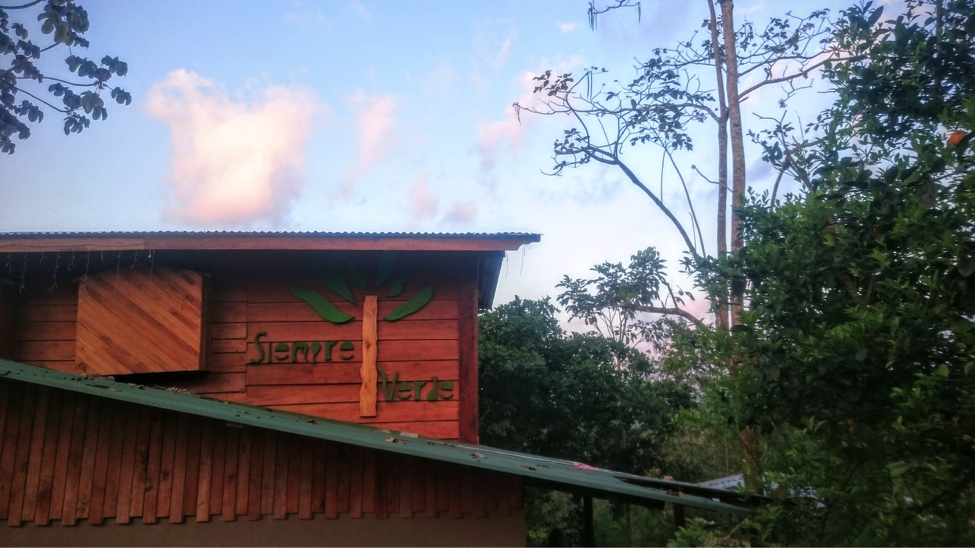Do you ever really know something without experiencing it first?
That is the question that continued to appear in my mind as I went through challenging, yet thought-provoking experiences. After flying all night and spending the day driving up and down beautiful mountain ranges on bumpy dirt roads, I still had no idea what was in store for me during my time in Costa Rica. I knew we would be staying on a farm, but what does that mean? Will we be living among the farm animals and fruit trees? Where would we sleep? How will I survive with so little sleep?
What awaited me was a vast land that was covered in a multitude of strange, but familiar fruit trees, vegetables, and plants. There were chickens and turkeys freely strutting about, cows that shuffled through the lush greenery, and dogs that would climb into the lodge at night and howl. Those fruits that I so often saw, perfect and pristine at the grocery store, were in their raw, organic form among the trees and bushes. The farm was so large and endless that it was impossible for us to explore its full size during our stay.
Day by day, we helped out around the farm, weeding, harvesting, and most of all, exploring and learning. We were like eager little children, excited and curious to learn about the roots of the perfect fruits at the grocery store. On the third day, I was assigned the task of harvesting the cotton from the plant. At first I thought it was a mistake. It looked as if someone had accidentally dumped cotton balls onto a random plant and neglected to take it out. As I looked closer, I saw that the little balls of fur had a dry, brown flower attached to it.
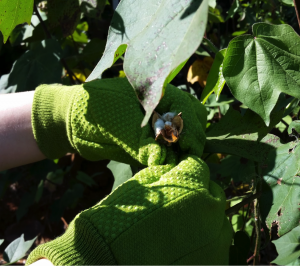
This seemed interesting. All I had to do was:
- Pick the cotton buds.
- Extract the cotton fibers from the bud.
- Remove excess leaves and dirt.
- Remove the seeds.
It’s almost too easy of a job compared to the weeding in the scorching, humid sun that we did in the past days.
Pick the cotton buds.
Simple enough. I had to snap off the buds from the main plant. With a bag for collection and some gloves, this was a cinch.
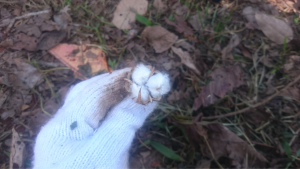
Extract the cotton fibers from the bud.
The buds separate the cotton fibers into four sections. I just had to pull out all of the stringy, white fibers from the shell. But wait! Some sections of the cotton have developed hard, compacted parts that cannot be used, similar to a piece of paper that has been through the washer and dryer. Sadly, those parts had to be thrown out onto the ground to be composted. When we had finished, we had a nice, but small collection of white fluff, no bigger than the size of a hand, that seemed ready to be used!
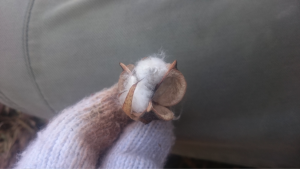
Remove excess leaves and dirt.
Things started to get a little harder here. There were little pieces of leaves and particles of dirt that clung to the silky strings. Pulling them out caused the cotton to follow as well, clinging onto the leaves like an old friend. The dirt particles had to be brushed off as best as we could to maintain cotton’s fair, white appearance.
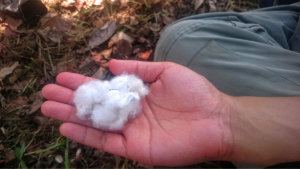
Remove the seeds
This proved to be the most time-consuming and endless processes I have ever encountered. Squeezing the cloud of fluff, we felt tiny little bumps intruding in the softness of the fiber. My fingers centered in on a single seed and struggled to extract it. It was nearly impossible to completely isolate the seed. The strings of white clung onto the bump and surrounded it, like a mother onto its child. One by one, we picked out the seeds. After sitting there for an hour, we weren’t even done with half of the bundle! The seeds seemed to rejuvenate constantly. Once one section was finished, the next section had more. In the end, we never finished de-seeding the cotton as it was time for lunch and we had to move on.

I came to realize that there is so much more to things than words can describe. My past idea about the cotton process was probably summarized in those four short steps and that it was long, repetitive work. Never would I have given the process a second thought, thinking deeply about all the about all the hard work that had to be put into it without the help of chemicals or machines. After this short experience, I’m more driven to learn by doing, not by observing, and I hope you too, as a reader, will choose to go out into the world to do more!
Written by Gracie Wong

